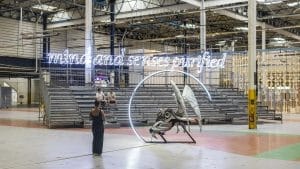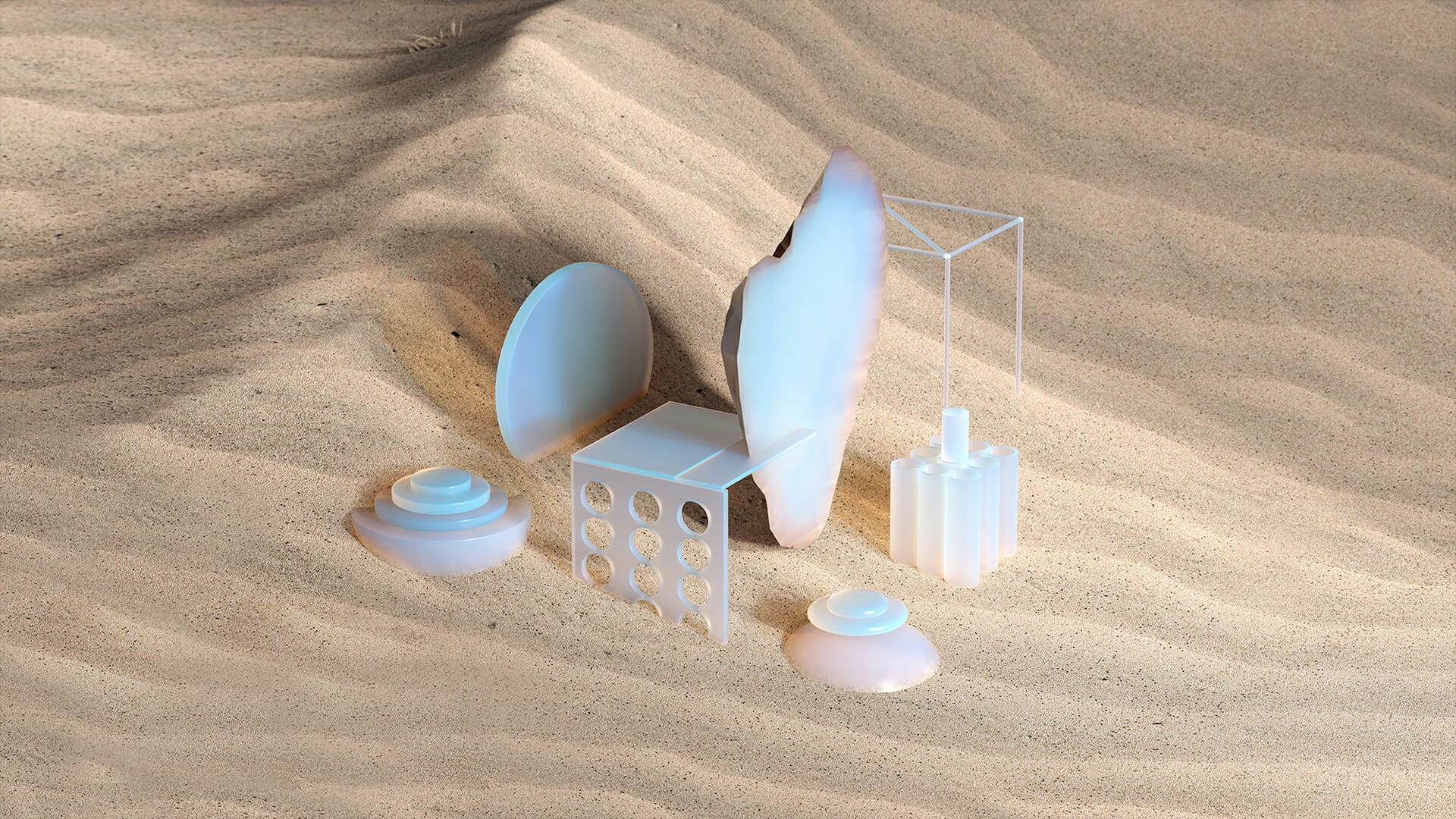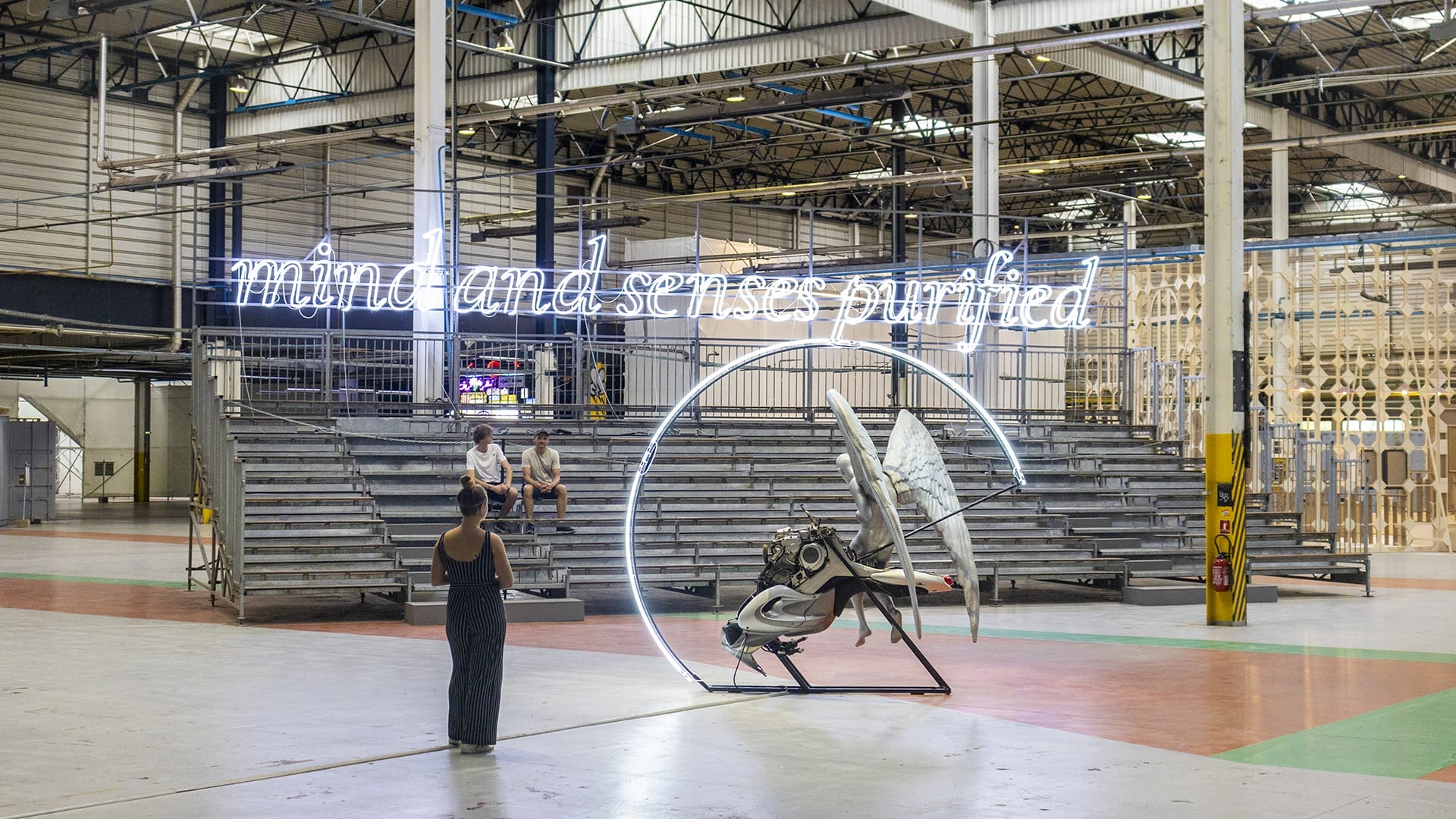
Léo Fourdrinier in conversation with Fakewhale
Fakewhale: How would you describe the journey that led you to develop your unique artistic style, particularly in the context of contemporary art?
Before moving on to visual art and sculpture, I trained in theatre, which taught me a lot about the history and texts of drama, directing, and set design. The notions of embodiment and expression of feelings that I now bring to my artistic work stem from that time. Growing up in Nîmes, a town in the south of France with a unique cultural heritage, I developed a passion for the history of the ancient civilisations of the Mediterranean basin and was able to develop my knowledge through contact with monuments, statues, and museums. In both cases, and later during artistic residencies, the collective dimension of learning has been a real driving force, and it’s thanks to exchanges with other artists, art world professionals, researchers, and scientists that I’ve been able to refine my techniques and expression.
Fakewhale: What are the main influences and inspirations that guide your creative process, both from a historical and cultural perspective?
History, archaeology, art history and science are constant influences and constantly attract my curiosity. But at the heart of my inspiration lies a reaction to a reading, often a poetic or philosophical text, because the emotion and concept are embodied in the work. It’s a way of manipulating my own feelings to extend them to more universal and collective considerations. In “Mind and Senses Purified” (2022) conceived for the 16th Lyon Biennial, I staged the myth of Icarus associated with the concept of catharsis (from ancient Greek κάθαρσις / kátharsis), which is as much an emotional recollection as a liberation of speech and can lead to the sublimation of impulses. In this sense, it is one of the explanations given for an audience’s relationship to a performance, particularly the theatre: catharsis allows us to purge ourselves of our passions.
Fakewhale: The manipulation of time and the reworking of historical elements are recurring themes in your works. Could you explain how these elements integrate into your artistic vision?
I try to reflect the mix of time and form in which I evolve, inevitably influenced by the history and culture of the area. The present is made up of a multitude of strata in which a considerable variety of forms and objects from different sources are intermingled. With the Internet, images of different status coexist and circulate at breakneck speed. I select and recover everyday objects and fragments, and try to identify their narratives. Historical elements are also used in an attempt to understand our cultural history. For example, my works in the « Amour » series depict a variation on the feeling of love, taking as their model the story of a well-known figure from Roman antiquity: Antinoüs, a young man known as the favourite and lover of the Roman emperor Hadrian. Divinised by Hadrian, Antinoüs is represented in a large number of works of art, making him one of the most famous faces of Antiquity. This approach allows me to look at relationships and sexuality in history, in this case specifically in Ancient Rome.
Fakewhale: In your approach to sculpture, you seem to merge ancient and contemporary aspects. What is your process in combining these diverse elements?
I work by assembling objects and fragments of objects that have been salvaged and reworked with elements designed in the studio. The elements that evoke ancient civilisations are copies, or copies of copies that I cast in the studio. More recently, I’ve also been incorporating photographs of artefacts and statues that I take in archaeological museums, which I integrate into my sculptures in a play of alternating 2D and 3D. Through my use of neon light, or in the case of certain monumental installations, the viewer’s body and perception of space are also key issues in my conception of the works.
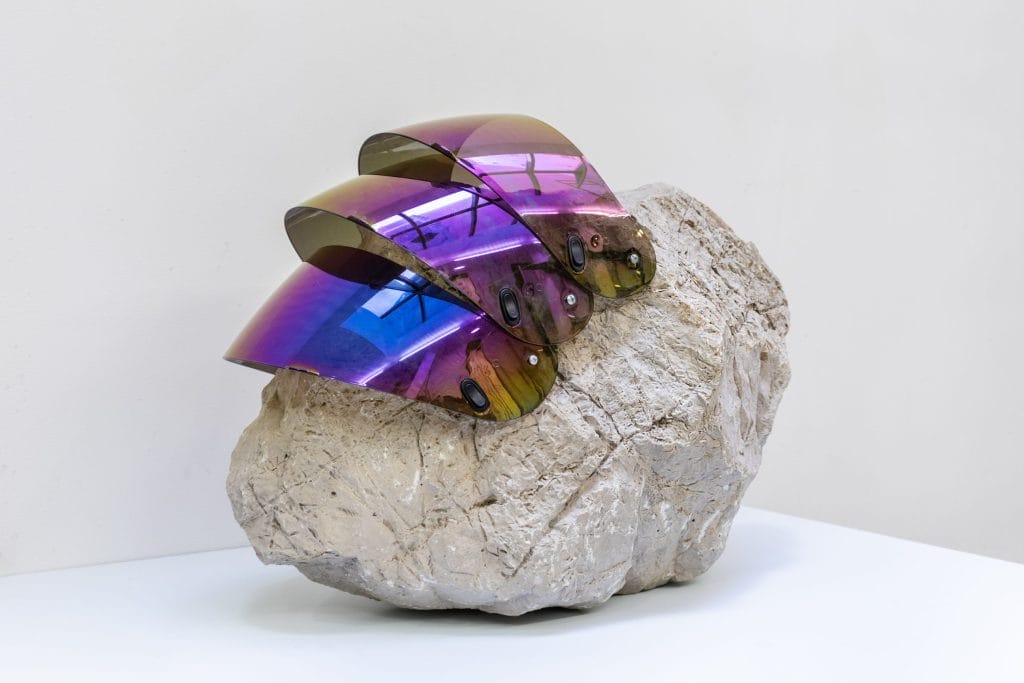
Fakewhale: How do you see the role of the artist in the context of contemporary society, especially in relation to themes such as history, mythology, and technology?
Art must continue to create a space for exchange and debate, for the circulation of information, for sharing and connecting with others. Taking the time to enter the world and sensibility of a person or group of people is essential. As far as history is concerned, we have a duty to pass on, analyse and question our culture in order to better understand contemporary issues. Technology, which is omniscient, is treated with great precision by artists whom I admire, and this helps us to understand the tools we have at our disposal, as well as the behaviour that results from them.
Fakewhale: Your works often explore the relationship between humanity and nature. Could you talk about how this theme manifests in your work and what messages you try to convey?
Most of my work and the narratives it constructs explore the links that unite living beings with each other and with their environment, whether through the evocation of mythologies (ancient and contemporary), scientific phenomena or personal stories. Nature is here to be considered in its total sense, as the stars and the infinity of the cosmos are part of this circuit. Working with the astrophysicist Arthur Le Saux made me aware of the phenomena that organise our universe on an intangible scale. Working with scientists who are trying to explain our origins, but who are above all looking to the future, has changed my perception of contemporary and future realities. My work can therefore be read as a desire for a future to be built collectively, in synergy with the natural, industrial and technological elements that surround us.
Fakewhale: In “Morning (skin crawling)” (2021), you explore themes such as lethargy and criticism of the capitalist system. What is your artistic vision regarding the representation of these contemporary themes?
This work evokes a rather macabre form of exhaustion, but also the notion of identity in relation to appearance, skin and costume. What’s left in the end? A folded garment and a bone – an animal bone, by the way. The work explores a certain humility and reminds us that we are all equal and mortal. At times reminiscent of the vanitas, my assemblages draw up humanist narratives in reaction to certain systems of domination. It’s a form of resilience.
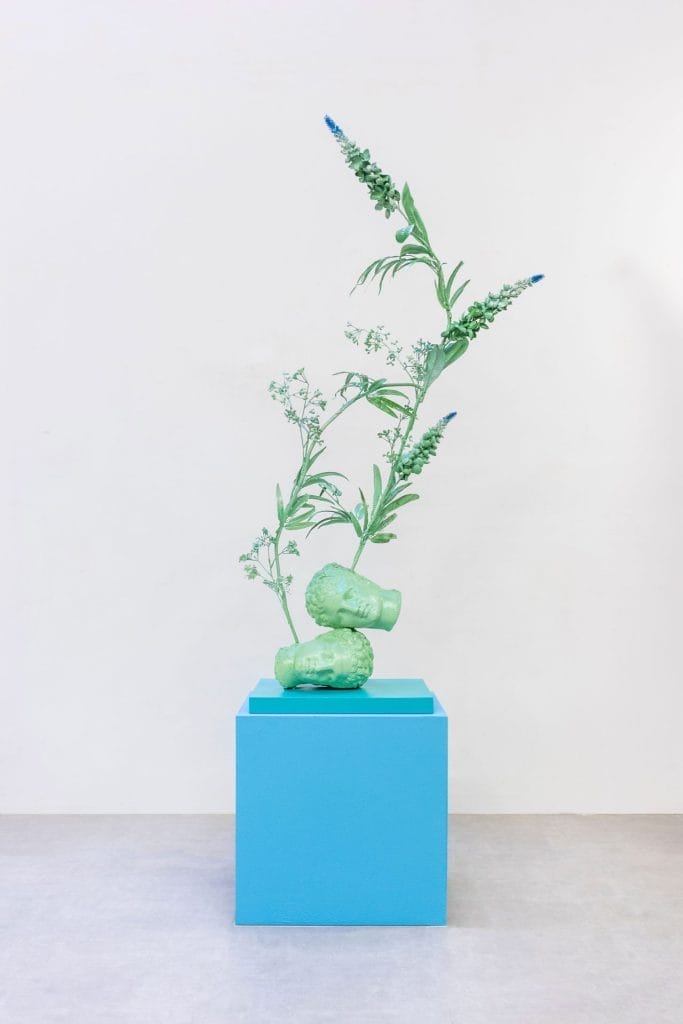
Fakewhale: “I’ll Fly With You” (2021) presents a unique reflection on masculinity. How do you approach the deconstruction of gender archetypes in your works?
This work is like a dissection, a dismemberment of a vision of masculinity inherited from antiquity, which transmitted a representation of the body to Western societies. The body is associated with an engraving of an exploded engine to show that this representation can be deconstructed and reconstructed. I have humorously titled the work “I’ll fly with you”, which is the name of Gigi D’Agostino’s clubbing song, to evoke seduction but also the idea that we build ourselves as individuals with cultural notions inherited from our heritage that we can call into question. It’s up to each of us to find our own balance.
Fakewhale: Works like “Don’t Cry Baby, it’s a Movie” (2019) show an interesting approach to female representation. How do you construct the narrative around the female figure and what messages do you try to convey through these representations?
This video is a meeting point between ancient and modern mythologies. In the form of a make-up tutorial, the work features a female character representing a humanoid reptilian. The humanoid reptilian is a half-human, half-reptile imaginary creature that plays a leading role in fantasy literature, science fiction, ufology and conspiracy theory. “Don’t Cry Baby, it’s a Movie” explores the relationship between the real and the fake, simulacra, concealment and costume. Yet beneath this apparent fiction lies a true story about the destruction of ancient statues. Recent scientific research explains that the partial destruction of ancient statues is the result of deliberate acts of vandalism designed to deactivate the symbolic power of the divinities represented. Moreover, large-scale iconoclasm was mainly political in nature. Disfiguring statues helped ambitious rulers to rewrite history to their advantage. Over the centuries, this erasure often took place along gender lines: the legacy of two powerful Egyptian queens, whose authority and mystique fuelled the cultural imagination, was largely erased from visual culture.
Fakewhale: In your work “My body is dust but how to deal with it?”, you significantly transform the material. How do you interpret the process of transformation and regeneration in your sculptures?
I try to make the changes and transformations of matter and the impermanence of the body perceptible. The mind-body link is also recurrent in my work. In “My body is dust but how to deal with it?” the representation of the body crumbles and becomes dust again. It’s also a game with the figure represented, Milo’s venus: could it disappear before our very eyes? What is her true identity? It’s a look at the role of archaeology and heritage preservation.
Fakewhale: In your sculptures, there seems to be a meeting between the microcosm and macrocosm. How do you represent and reconcile these two concepts in your artistic work?
As with the different temporalities that come into play in my work, scales and organisms are intermingled. The visible and the invisible too. I’m in favour of a way of thinking where every element counts and contributes to life.
Fakewhale: The image of Janus Bifrons seems to have a central role in some of your works. How do you interpret the symbolism of this Roman god in the context of your artistic practice?
The passages and actions of time are fundamental dynamics in my work. Janus, the Roman god with two faces, one turned towards the past and the other towards the future, is the perfect expression of this interaction. Taking the past into account is essential to understanding the present. It’s funny, because a lot of my work features ‘double’ figures: ‘Vision of Infinity’, the ‘Amour’ series, ‘Janus’, ‘Supernatural Delight (Hercules & Diomedes)’, ‘Dogs Monologue’… Perhaps it’s a way of saying that it’s with the other that we can build a future?
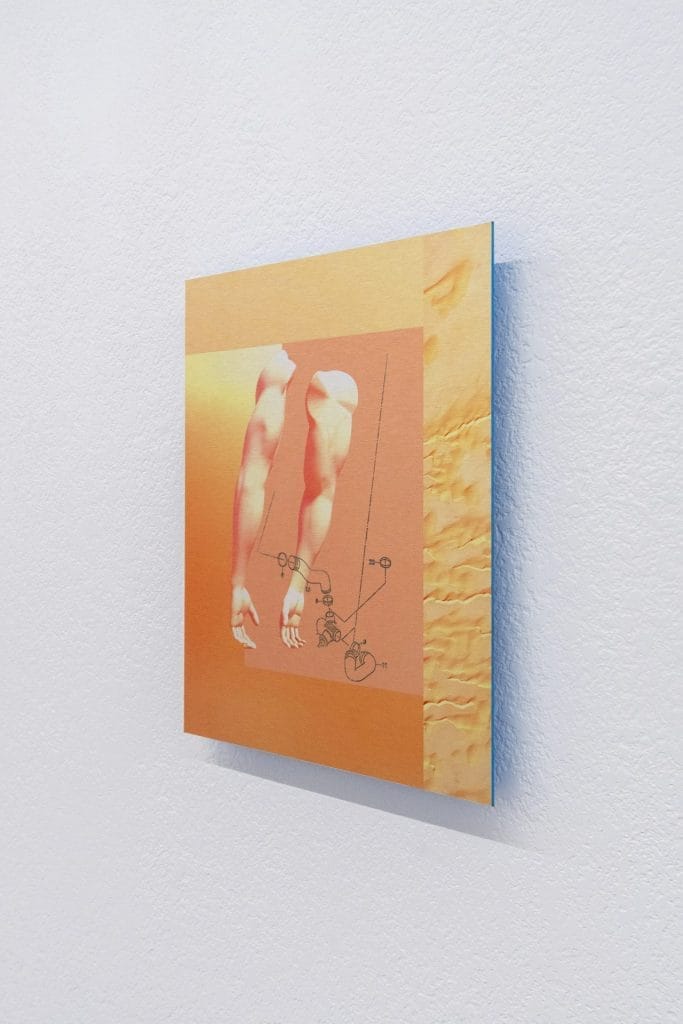
Fakewhale: The concept of “simplexity” emerges in works like “Simplexity (From Him to Eternity)” (2021). How do you incorporate this concept into your creations and what impact does it have on the understanding of your work?
Simplexity is a neologism that suggests a possible complementary relationship between complexity and simplicity. The sculpture you refer to is a balancing act between different elements: an egg rests atop an iPhone cable held at arm’s length. It evokes the fragility of nature and humanity’s duty to preserve it. Naming this work ‘Simplexity’ is an optimistic way of saying that nothing is impossible.
Fakewhale: The use of computer-generated imagery in your works suggests a bridge between technology and artistic heritage. How do you see the role of technology in the preservation and reinterpretation of archaeological heritage?
In my series “the end of Paradise”, historical statues from antiquity and the Renaissance are represented in 3D to evoke the mobility and circulation of images thanks to technology. It’s also a way of archiving and reconstructing certain works of art, with a duty to preserve and renovate. Technology and the communities of enthusiasts who are taking up these tools are making it possible to write a collective history, and that’s exciting!
Fakewhale: In works like “Discosoma”, where you blend natural and industrial elements, what message do you try to convey about the relationship between humanity and nature?
In my work, stone, nature and the stars play an essential symbolic role. Stardust makes up the cosmos, but also our landscapes and our organisms. I see humanity on the same level as the elements of our universe, where stone becomes a model of permanence with which we are confronted. I was greatly inspired by the writings of Roger Caillois, a twentieth-century French writer, poet and philosopher, who said of stones: “Man envies them their duration, hardness, intransigence and brilliance, for being smooth and impenetrable, and whole even when broken”. To use stones as an extension of the body in my work is to make tangible the invisible and powerful energies that bind us to the universe.
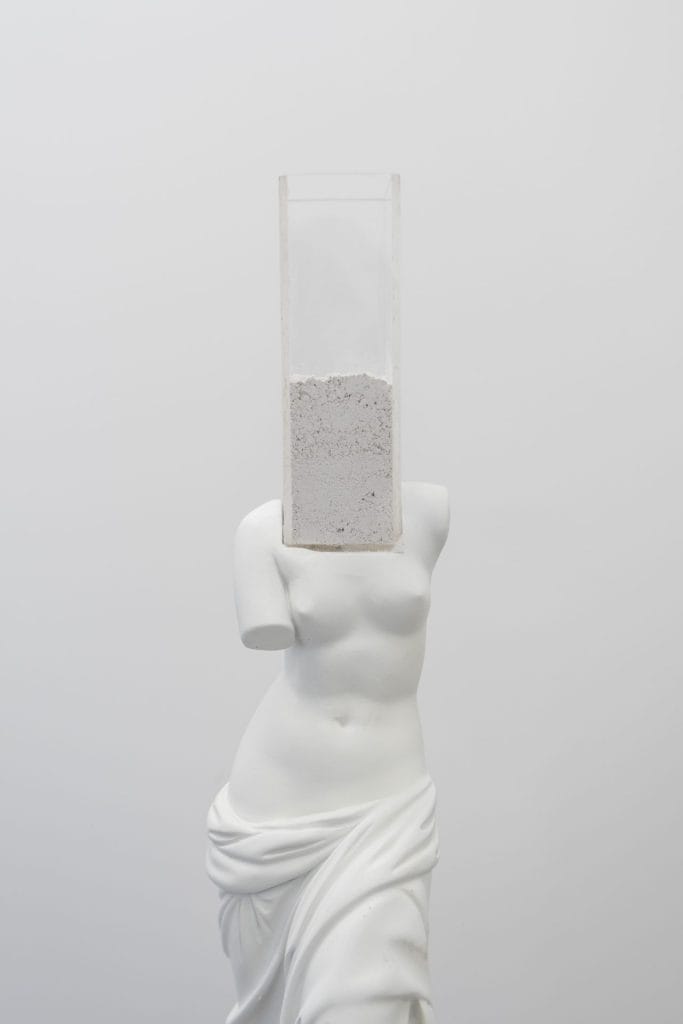
fakewhale
Founded in 2021, Fakewhale advocates the digital art market's evolution. Viewing NFT technology as a container for art, and leveraging the expansive scope of digital culture, Fakewhale strives to shape a new ecosystem in which art and technology become the starting point, rather than the final destination.
You may also like
When Sound Meets Chaos: Inside the World of Proximity Music
As the event “Proximity Music: Echoes of Entropy” prepares to open its doors in The Hagu
The Stillness That Burns: Inside the World of Bill Viola
Lately we’ve found ourselves drawn to the spaces where time resists compression, where video art m
Six N. Five: A Unique Fusion of Architecture, Nature & Design
Six N. Five is a Barcelona-based digital art studio founded by Argentinian designer and artist Ezequ

